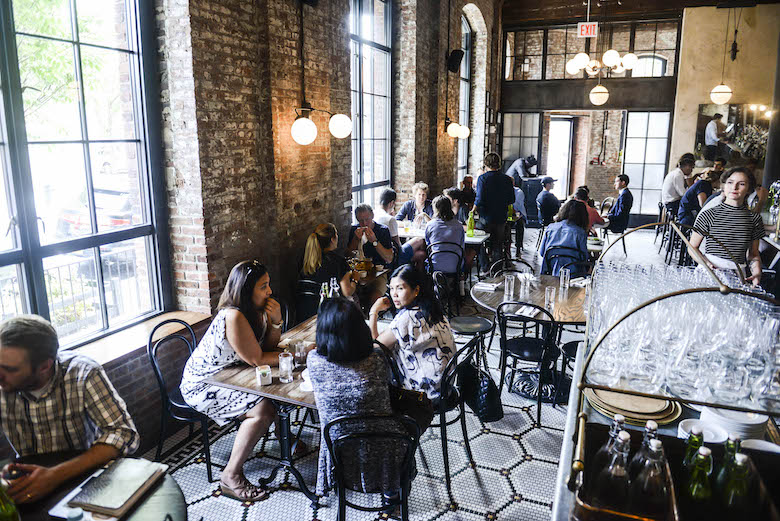
In the airy dining room of Williamsburg’s Reynard, servers glide between tables setting down dishes: Kabocha squash with pumpkin seeds and whipped butter here, heritage pork chops with mushrooms and roasted pear over there. Cooks work around a coal hearth in the bustling kitchen to push out those dishes with a pleasant smoky taste, but at the same time, they’re also saving as much by-product and scraps as possible to be fermented, dried and used in other dishes. You wouldn’t know it from the dining room, but Reynard wastes as little as possible and is working toward an ambitious goal: reduce the kitchen’s waste to zero.
“Working in restaurants has specifically made me so aware of how much food and trash actually gets wasted or accumulated in one day,” executive chef Christina Lecki said. “I very much believe it has to be the future of our industry to be more conscious of how we receive products and how much food we waste.”
https://www.instagram.com/p/BbUkMfeHAb5/?taken-by=reynardnyc
Lecki, who oversaw the kitchen at the Breslin at the Ace Hotel and worked with April Bloomfield to open both the John Dory Oyster Bar and White Gold Butcher Shop, jumped at the chance to join Reynard in July 2017. She wanted the chance to cook food over wood and coals and to work with Andrew Tarlow.

Since starting, she’s overseen the renovation of the restaurant’s kitchen to create the new hearth, which is the focus of the carefully composed seasonal dishes the restaurant puts out and has allowed the kitchen to become more sustainable through a 24-hour cooking schedule. As it takes a long time for the wood oven to cool, after the coals are put out, Lecki starts cooking certain items, like tomatoes or squash, in the oven and leaves them to cook overnight with the fire out, a method that saves time and energy. Lecki continues to work toward her goal of reducing the kitchen’s overall waste through a mix of new cooking techniques, auditing the backend systems for sustainability and investigating alternatives to packaging.
“It’s been a challenge,” said Lecki, who estimates they are at about 50 percent of her goal. “We compost, as most restaurants do, but have not as of yet been able to look deeper into the practices of where the compost goes after it is picked up. We are still struggling, however, with getting purveyors to give us products and goods in bulk or to take back the boxes that the items come in.”
In the meantime, Lecki and her staff continue to find creative uses for as much food as possible—croutons from bread ends, roasted squash seeds—that don’t taste like an afterthought.



